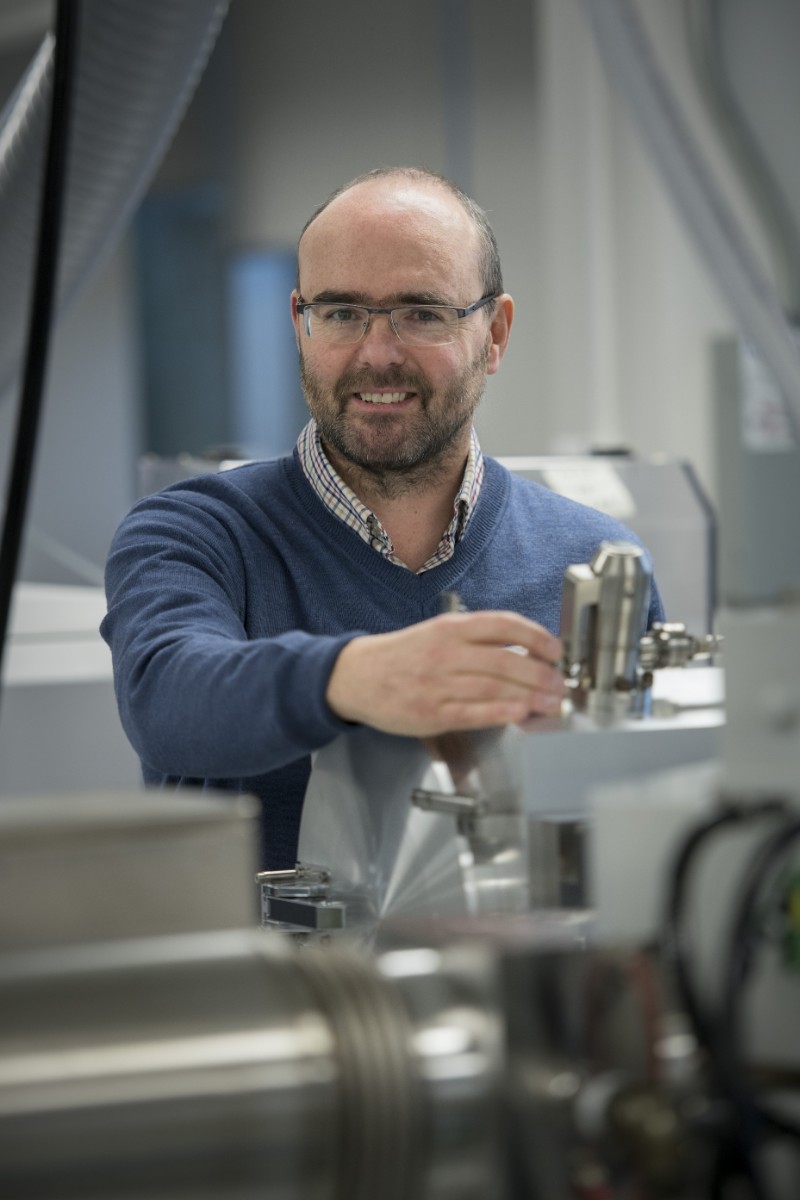
Graham Pearson, Canada Excellence Research Chair Laureate in Arctic Resources and Henry Marshall Tory Chair in the Department of Earth and Atmospheric Sciences, has been named a Fellow of the American Geophysical Union. Photo credit: Ian Jackson
Not unlike the mineral he has dedicated his career to studying, Graham Pearson only gets better under pressure. His most recent slate of awards attests to this, coming at the close of a whirlwind decade of boundary-pushing discoveries since joining the University of Alberta.
The Canada Excellence Research Chair Laureate in Arctic Resources and Henry Marshall Tory Chair in the Department of Earth and Atmospheric Sciences has just been named a fellow of the American Geophysical Union (AGU), the largest geological organization in the world, with only one in 1000 of its ~62,000 members recognized each year as fellows.
What's more, he is also this year's recipient of the AGU's Bowen Award, given by the Volcanology, Geochemistry, and Petrology Section, in recognition for his outstanding work in the advancement and promotion of discovery of Earth and space science.
Recognized as one of the most innovative minds in diamond research who is also known for his modesty, Pearson recounts the week earlier this summer when he learned of the AGU honours.
"In a seven-day period, I had two papers accepted, one in Nature and one in Science, plus these two honours from the AGU. It was a pretty good week," recalls Pearson.
Deep discoveries
Already a well-established scientific force to be reckoned with, Pearson's prestige skyrocketed in 2014 with the publication of his pivotal discovery of ringwoodite-Earth's fifth most abundant mineral-in a diamond that pointed to a vast reservoir of water bound to silicate rocks in Earth's mantle.
Not only did the discovery change the face of diamond research and exploration, shifting focus to a class of diamonds known as super deep diamonds, stemming from roughly 700 kilometres beneath Earth's surface, it garnered unprecedented global attention from mainstream media, with regular requests still coming in to this date from outlets across the globe.
"Research on super deep diamonds was largely dominated by my colleague Thomas Stachel and his colleagues, but it had sort of plateaued for a while," said Pearson. "Since the ringwoodite discovery, there's been a huge surge in interest in what super deep diamonds tell us about the deepest parts of the Earth."
Previous to the discovery, Pearson explained, everything that was theorized and known about the deepest depths of the Earth was from theory and experiments. Super deep diamonds are now providing evidence to verify more than half a century of theory and experiments.
"Super deep diamonds are really unique recorders of the deepest parts of the plate tectonic cycle. In a gem in your hand or on your finger, you've got a record of the deepest parts of Earth."
Beyond the increase in research attention and shift in exploration paradigm, Pearson notes the subsequent interest from the next generation of diamond researchers.
"We are seeing interest from graduate students not only in Canada but a whole spectrum of countries as well."
In addition to supervising his own eight graduate students and three post-docs, Pearson also leads the NSERC-funded Diamond Exploration and Research Training School (DERTS), a unique graduate program that unites together industry, Government and academia to train students in the latest advances in geochronology, indicator mineral analysis/interpretation, volcanology, exploration geophysics and remote-sensing.
It's what's inside that counts
Proving the theory that good things often come in threes, beyond the Bowen Award and the AGU fellowship, Pearson is also set to be recognized with a J. Gordin Kaplan Award for Excellence in Research this fall, arguably the University of Alberta's most prestigious research award.
Previous awardees in the Faculty of Science including Stan Boutin (Biological Sciences, 2017), Todd Lowary (Chemistry, 2016), James Pinfold (Physics, 2015), Philip Currie (Biological Sciences, 2014), Roderick Wasylishen (Chemistry, 2013), Don Page (Physics, 2012), Jed Harrison (Chemistry, 2011), Richard Palmer (Biological Sciences, 2010), among others dating back to the award's inception in 1982. Pearson is the first recipient from the Department of Earth and Atmospheric Sciences, recognition he attests to supportive departmental colleagues.
"There's not everywhere that you can go in the world that gives you this quality of support, this quality of research environment, with great colleagues," said Pearson, who notes that the University of Alberta is now indisputably the world's number one institution for diamond-related research.
With all of the super deep diamond discoveries-he's on track to publish another Nature and Science paper later this year-plus his work characterizing continent formation (not to mention the awards and accolades piling up with the passing years) Pearson shows no sign of anything less than increasing the pressure of his quest to understand what is happening at the deepest parts of Earth's mantle.
"I've thought myself very lucky in my research career that I've been able to work on a mineral that yields special scientific insight, but there's also this extra bite at the cherry in terms of the economic spinoffs. Ten years ago, I was worried I'd run out of ideas in my research career," said Pearson with a chuckle. "I'm not worried about that anymore."
Congratulations, Graham.